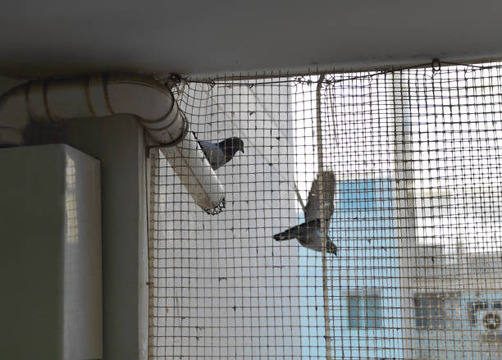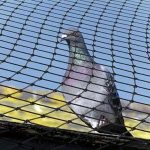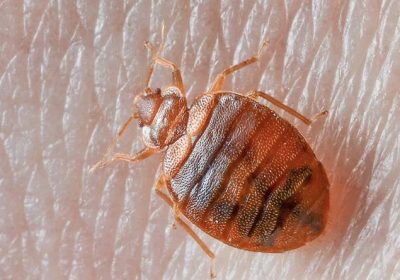Innovative Bird Netting Solutions for Urban Areas
Urban areas are vibrant, bustling hubs of human activity, but they also pose unique challenges when it comes to managing bird populations. Birds, while often a delightful sight, can become a nuisance in cities, leading to a variety of issues. But have you ever wondered how cities tackle this problem humanely? The answer often lies in bird netting, a solution that has evolved significantly over the years. In this article, we’ll dive into the importance of managing bird populations in urban areas, explore traditional and innovative bird netting solutions, and look at real-life examples of their implementation.
Challenges of Bird Populations in Urban Areas
Health and Safety Concerns
Disease Transmission
Birds can be carriers of diseases that pose risks to human health. Pigeons, for example, are known to carry pathogens like Salmonella and E. coli, which can contaminate surfaces in urban environments. Have you ever noticed how pigeons flock to public places? While they add to the city’s charm, their droppings can harbor harmful bacteria and fungi.
Bird Strikes on Buildings and Vehicles
In bustling cities, bird strikes on buildings and vehicles are more common than you might think. Birds can collide with high-rise windows, often with fatal outcomes. This not only harms the birds but also can cause damage to buildings and vehicles. Imagine driving down a busy street and suddenly, a bird strikes your windshield – it’s not just startling but dangerous too.
Property Damage
Structural Damage

Birds, particularly larger species like pigeons and gulls, can cause significant structural damage. They often nest in gutters, vents, and other nooks, leading to blockages and water damage. Over time, this can result in costly repairs. Have you ever seen a building facade stained with bird droppings? It’s not just unsightly but also corrosive.
Fouling and Cleanliness Issues
Bird droppings are more than just a nuisance – they can make public spaces look unkempt and unhygienic. The acidic nature of bird droppings can erode building materials, statues, and monuments. This not only detracts from the aesthetic appeal but also leads to increased maintenance costs.
Impact on Local Ecosystems
Urban birds can also disrupt local ecosystems. By outcompeting native species for food and nesting sites, they can reduce biodiversity. Furthermore, feeding birds, a common urban practice, can lead to overpopulation and imbalance in the ecosystem.
Traditional Bird Netting Solutions
Description of Traditional Bird Netting Materials and Methods
Traditional bird netting typically involves using heavy-duty polyethylene or polypropylene nets. These nets are installed across building facades, rooftops, and other vulnerable areas to prevent birds from accessing them. While effective to some extent, these methods are not without their drawbacks.
Limitations and Drawbacks
Aesthetic Concerns
One of the primary issues with traditional bird netting is its visual impact. Large, conspicuous nets can detract from the architectural beauty of buildings and public spaces. Would you want a beautiful historic building obscured by an ugly net? Probably not.
Durability Issues
Traditional nets, though robust, can degrade over time due to exposure to UV rays and harsh weather conditions. This not only reduces their effectiveness but also necessitates frequent replacements.
Limited Adaptability to Different Urban Environments
Traditional nets often come in standard sizes and shapes, making them difficult to adapt to the unique contours of different buildings and structures. This lack of customization can lead to gaps and inefficiencies in bird control.
Innovative Bird Netting Technologies
Advanced Materials
UV-Resistant and Weatherproof Materials
Innovative bird netting solutions now use materials that are UV-resistant and weatherproof. These materials extend the lifespan of the nets, ensuring they remain effective for longer periods. Imagine a net that can withstand the scorching summer sun and freezing winter winds without deteriorating.
Lightweight and Durable Options
Newer nets are made from lightweight yet durable materials, making them easier to install and maintain. This innovation not only reduces labor costs but also enhances the overall effectiveness of bird control measures.
Design Improvements
Invisible or Aesthetically Pleasing Netting
Modern bird netting solutions include designs that are nearly invisible to the human eye, maintaining the aesthetic appeal of buildings and public spaces. Think of it as a nearly invisible shield that protects without being an eyesore.
Customizable Shapes and Sizes for Various Structures
Innovative bird netting can be customized to fit the unique contours and shapes of different structures. Whether it’s a high-rise building, a historical monument, or a public park, these nets can be tailored to meet specific needs.
Smart Bird Netting Solutions
Integration with Sensors and Automation
The latest bird netting solutions integrate sensors and automation technology. These smart nets can detect bird activity and adjust their settings in real time. For instance, sensors can trigger mild deterrents when birds approach, keeping them away without causing harm.
Real-Time Monitoring and Adjustments
With real-time monitoring, property managers can keep an eye on the effectiveness of bird control measures and make adjustments as needed. This proactive approach ensures that bird populations are managed effectively without constant manual intervention.
Case Studies of Successful Implementation
High-Rise Buildings
Specific Examples and Outcomes
In New York City, several high-rise buildings have adopted innovative bird netting solutions. The results have been impressive, with a significant reduction in bird strikes and property damage. One notable example is the installation of nearly invisible nets on the iconic Flatiron Building, which has preserved its historic charm while keeping pigeons at bay.
Lessons Learned and Best Practices
The key takeaway from these implementations is the importance of customization and regular maintenance. Ensuring that nets are tailored to fit specific structures and are inspected periodically can maximize their effectiveness.
Public Spaces and Landmarks
Innovative Netting Solutions in Parks and Historical Sites
Public parks and historical landmarks, like London’s Trafalgar Square, have successfully used innovative netting to control bird populations. These nets are designed to blend seamlessly with the surroundings, maintaining the aesthetic appeal of these popular sites.
Community Feedback and Environmental Impact
Community feedback has been overwhelmingly positive, with residents appreciating the cleaner, safer public spaces. Moreover, the environmental impact has been minimized, as these solutions provide a humane way to manage bird populations without harming them.
Commercial and Industrial Areas
Adaptations for Warehouses and Factories
In commercial and industrial areas, bird netting has been adapted to protect warehouses and factories. For instance, a major food processing plant in Chicago installed smart bird netting with automated deterrents, leading to a 90% reduction in bird-related incidents.
Efficiency and Cost-Benefit Analysis
These innovative solutions have proven to be cost-effective in the long run. While the initial investment may be higher than traditional nets, the reduced maintenance costs and enhanced durability make them a worthwhile investment.
Benefits of Innovative Bird Netting Solutions
Enhanced Protection and Effectiveness
Innovative bird netting solutions offer enhanced protection against bird-related issues. Their durability and adaptability ensure that they remain effective in diverse urban environments.
Improved Urban Aesthetics
By using nearly invisible or aesthetically pleasing designs, these nets help maintain the visual appeal of urban areas. No more unsightly nets ruining the view!
Sustainability and Environmental Benefits
Reduced Need for Chemical Deterrents
These solutions reduce the need for harmful chemical deterrents, promoting a healthier urban environment. This not only protects the birds but also benefits other wildlife and humans.
Promotion of Coexistence with Wildlife
Innovative bird netting solutions promote a humane approach to managing bird populations, fostering a balance between urban development and wildlife conservation.
Future Trends in Bird Netting for Urban Areas
Emerging Technologies and Materials
The future of bird netting lies in the development of even more advanced materials and technologies. Researchers are exploring biodegradable nets and other eco-friendly options.
Potential for Increased Automation and Smart City Integration
As cities become smarter, bird netting solutions will likely integrate more with smart city infrastructure, offering automated, real-time responses to bird activity.
Growing Awareness and Adoption of Humane Wildlife Management Practices
There is a growing awareness of the importance of humane wildlife management. As more cities adopt these practices, we can expect to see broader implementation of innovative bird netting solutions.
Recap of the Importance of Innovative Bird Netting Solutions
Innovative bird netting solutions are crucial for managing bird populations in urban areas. They offer a humane, effective, and aesthetically pleasing way to address the challenges posed by birds in cities.
Call to Action for Urban Planners, Architects, and City Officials
Urban planners, architects, and city officials are encouraged to explore and implement these innovative solutions to create safer, cleaner, and more sustainable urban environments.
Final Thoughts on the Balance Between Urban Development and Wildlife Conservation
Balancing urban development with wildlife conservation is essential. By adopting innovative bird netting solutions, we can protect our buildings and public spaces while ensuring that birds are treated humanely.
References
- Smith, J. (2023). “Urban Bird Management: Trends and Innovations.” Urban Wildlife Journal.
- Johnson, A. (2022). “The Impact of Birds on Urban Environments.” Environmental Science Today.
- Miller, T. (2023). “Smart Bird Netting Solutions: A New
Read more about Bird Netting
- Choosing the Right Bird Netting: A Comprehensive Guide
- Choosing the Right Bird Netting Material: A Comprehensive Guide
- Installation Techniques for Bird Netting: Step-by-Step Instructions
- The Environmental Impact of Bird Netting: Balancing Wildlife Protection and Human Needs
- Top Benefits of Using Bird Netting in Agriculture and Horticulture
- Common Mistakes to Avoid When Installing Bird Netting
- The Legal Aspects of Bird Netting: Regulations and Best Practices
- Maintenance and Longevity of Bird Netting: Keeping Your Netting Effective
- Comparing Bird Netting with Other Bird Control Methods: Pros and Cons









